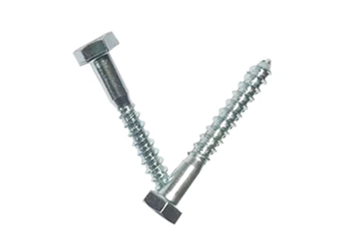Pro . 12, 2024 11:28 Back to list
din 125 washer
Understanding DIN 125 Washers Essential Components in Mechanical Assembly
When it comes to mechanical assembly, the importance of each component can often be understated. Among these components, washers play a critical role in ensuring structural integrity and proper functioning across various applications. One widely recognized type of washer is the DIN 125 washer, a standard that has gained prominence due to its reliability, ease of use, and compatibility with a range of mechanical systems.
What is DIN 125?
The term DIN 125 refers to a specific standard for flat washers outlined by the Deutsches Institut für Normung (German Institute for Standardization). These washers are commonly used in conjunction with bolts and nuts to distribute load evenly across a fastened assembly. The use of these washers helps prevent damage to the surfaces under load, allows for better sealing, and minimizes the risk of loosening due to vibration.
Characteristics of DIN 125 Washers
DIN 125 washers are characterized by their flat shape, typically made from various materials including steel, stainless steel, and plastic. The key dimensions defined by the DIN standard include
1. Inner Diameter (ID) The hole in the center of the washer that typically matches the diameter of the bolt or screw being used. 2. Outer Diameter (OD) The overall diameter of the washer, which determines the surface area used to distribute load. 3. Thickness The thickness of the washer, which can affect its strength and the amount of load it can handle.
The specifications ensure that the washers fit properly, providing the necessary support and protection against wear and tear.
Applications of DIN 125 Washers
DIN 125 washers are ubiquitous in numerous industries, including automotive, construction, and machinery. Their applications include
din 125 washer

1. Automotive In vehicles, DIN 125 washers are used to secure various components, such as engines and suspensions, helping to manage vibration and load. 2. Construction In building structures, these washers are often employed in conjunction with bolts to secure beams and columns, ensuring stability and safety. 3. Machinery In industrial settings, washers are vital for all types of machines to prevent loosening during operation and to allow for better weight distribution, reducing stress on critical parts.
Advantages of Using DIN 125 Washers
The use of DIN 125 washers in mechanical assemblies offers numerous advantages
1. Load Distribution By having a larger surface area, these washers help to evenly distribute the load across the assembly. This minimizes stress concentrations and potential deformation of the material. 2. Surface Protection They act as a buffer between the bolt/nut and the surface, protecting the materials from damage and wear. 3. Improved Stability The inclusion of a washer can significantly enhance the stability of a fastening by reducing the likelihood of loosening caused by vibration or thermal expansion.
4. Versatility Available in various sizes and materials, DIN 125 washers can be easily adapted to numerous applications and environments, whether they require corrosion resistance or lightweight components.
Considerations for Selecting DIN 125 Washers
When selecting DIN 125 washers for a project, several factors must be taken into account
1. Material Depending on the environment (e.g., exposure to moisture, chemicals, heat), the right material must be chosen to ensure durability and longevity. 2. Size Accurate measurements of the inner and outer diameters, as well as the thickness, are crucial. This ensures that the washer fits snugly with the bolt or nut while providing adequate support. 3. Load Requirements It is essential to evaluate the load the assembly will bear. Depending on the application, thicker or larger washers may be required to handle heavier loads.
Conclusion
DIN 125 washers are fundamental components in mechanical assemblies, providing crucial benefits such as load distribution, surface protection, and enhanced stability. Their widespread use across various industries highlights their importance in maintaining the integrity of mechanical systems. For engineers and technicians, understanding the characteristics, applications, and selection criteria for DIN 125 washers is essential in ensuring the success and longevity of their projects. By investing time in selecting the appropriate washers, individuals can significantly mitigate risks associated with mechanical failure and contribute to the overall efficiency of their mechanical assemblies.
-
The Ubiquitous Reach of DIN934 in Application Realms
NewsMay.16,2025
-
Exploring Different Bolt Types
NewsMay.16,2025
-
Cracking the Code of Sleeve Anchor Mastery
NewsMay.16,2025
-
Clamp Design Principles,Types and Innovations
NewsMay.16,2025
-
Artistry Inspired by the Humble Anchor Bolt
NewsMay.16,2025
-
A Deep Dive into Screw Types
NewsMay.16,2025


